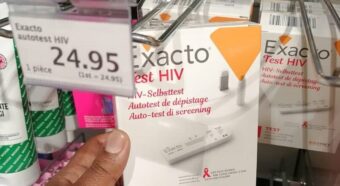The 39th Global Fund board meeting: key take-aways
- July 12, 2018
- Meeting
- By Armelle Nyobe

What were the key decisions made during the 39th Global Fund board meeting?
The eligibility policy – with its broad implications to the levels of funding – was always going to be the elephant in the room. Given the spike in epidemics among some populations, particularly among Upper Middle-Income Countries (UMICs), affected stakeholders opened up discussions for the eligibility policy to be revisited. Proponents of the move to revisit the policy posited that, among others, the middle-income status of countries does not guarantee that countries would invest in responding to their epidemics.
In the end, the board agreed to largely retain the eligibility policy to ensure funding under the Global Fund mechanism remained driven by burden and ability to pay. This entails resources would continue to be focused on high burden and high impact countries, which would also ensure the gains made hitherto in these countries are not reversed. Some minor changes were however made which includes; simplification of disease burden categories from five to simply “high” and “not high”; updates to disease burden metrics for TB and malaria; changes to the G-20 rule and exceptions to the OECD-DAC requirement and clarifications for transition funding.
The board has now put in place a policy towards Global Fund approach to non-eligible countries facing a health crisis. Under this policy, the board would request the Secretariat, in consultation with relevant partners, to present potential investment cases meeting prescribed criteria with specific options for how the intervention should be funded. This policy ensures that the Global Fund has a mechanism for responding in no-eligible countries, to ensure that spikes in epidemics in these countries do not get out of hand and do not spill over into eligible countries.
Risk appetite framework was another key decision made by the 39th Global Fund board meeting. With this policy framework, the Global Fund has identified nine key risks, their aggregate risk levels, their targeted risk, the risk appetite to address them and the timeframe required to attain the targeted risk levels. The key feature in the policy is that in-country supply chain, program quality and strategic data quality and availability – the three organizational risks currently with high aggregate risks – all have corresponding high risk appetite. This will ensure that the Global Fund has the necessary appetite to address identified risks, which is likely to contribute towards achieving the right balance between financial and programmatic assurance.
The CCM policy decision is perhaps one that many an African country has had a keen interest in, given that this attracted much consultations across implementers. The board passed the much-discussed CCM code of conduct policy, along with setting aside $1,2m towards its roll out. The new CCM policy – which replaces the CCM guidelines – entails CCMs are now differentiated along standard CCMs, CCMs in transition-preparedness, and CCMs in challenging operating environments (COEs) and three maturity levels are introduced; Basic Governance CCMs, Oversight/Engaged CCMs and Strategic CCMs. In addition, the board approved a total of $18.9m over the next three years to fund CCM evolution in the “intermediate” level of ambition with $7.42m set aside in year 1 under unfunded quality demand (UQD). This will see a sample of 16 CCMs across the entire Global Fund portfolio supported to improve their performance.
The board also approved the policy to strengthen board leadership selection process. With this policy in place, the Global Fund will move away from the previously bifurcated process of selecting the chairperson and the vice-chairperson of the organization’s board. The new process ensures there is a single board leadership nomination committee (BLNC) comprised of equal numbers of individuals from both voting blocks and one technical partners, utilizes a search firm to broaden pool of candidates, ensures complementarity between candidates, and maintains the rotation system between the two voting groups.
A couple of announcements are worth mentioning. The announcement by the French government that France will host the replenishment conference is music to the ears of many and worthy of an applause. This is a huge boost towards the Global Fund’s resource mobilization initiatives. The German delegation also announced that, together with the governments of Norway and Ghana, they have launched the Global Wellness Initiative, a global health initiative that is meant to be a vehicle for achieving Universal Health Coverage (UHC) and the Sustainable Development Goals (SDGs).
The 39th Global Fund board meeting was in many was pro-African and a success for the continent. In particular, ensuring the eligibility policy will continue to be based on burden and economic ability, is welcome news on the African continent. So is the risk appetite framework which ensures that the Global Fund has high risk appetite to tackle areas with current high aggregate risks and possibly contribute towards having the right balance between financial and programmatic assurance. However, notwithstanding the foregoing, there remains a lot of work ahead if epidemic control is to be achieved in 2020 and if we are to remain on course towards eradication of the three epidemics in 2030. Addressing RSSH, malaria resurgence, TB missing cases, the vulnerability of adolescent girls and young women (AGYW) and absorption capacity challenges should be high on the policy agenda.
Announcements
The Board announced appointments to the Audit and Finance Committee (AFC), the Ethics and Governance Committee (EGC) and the Strategy Committee (SC). African Constituencies are represented in Strategic Committee by Dr. Abdoulaye Ciré Anne and in Ethics and Governance Committee by Dr. David Kihumuro Apuuli. Congratulations to them
See the full appointments list here.


